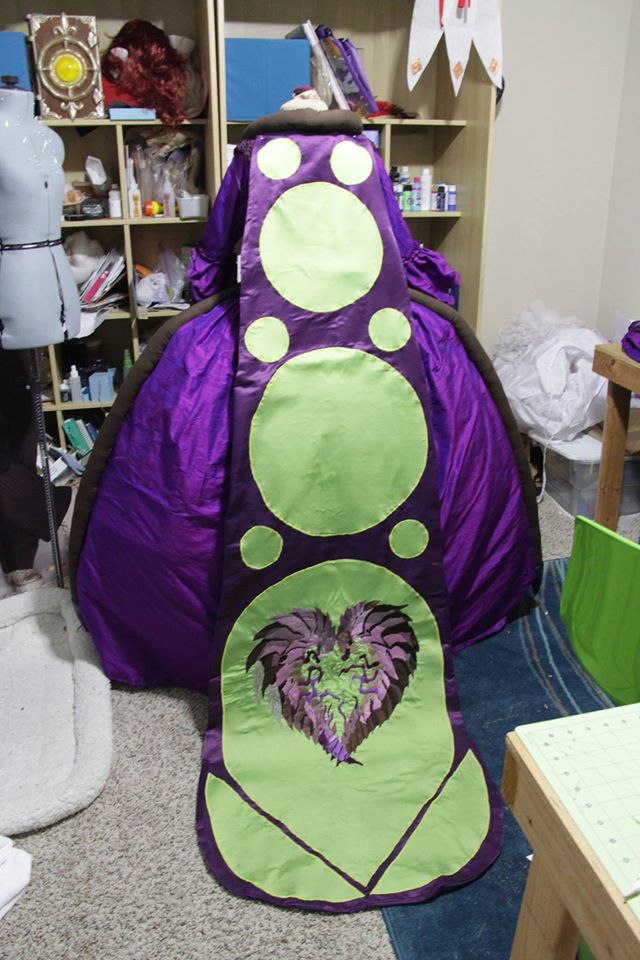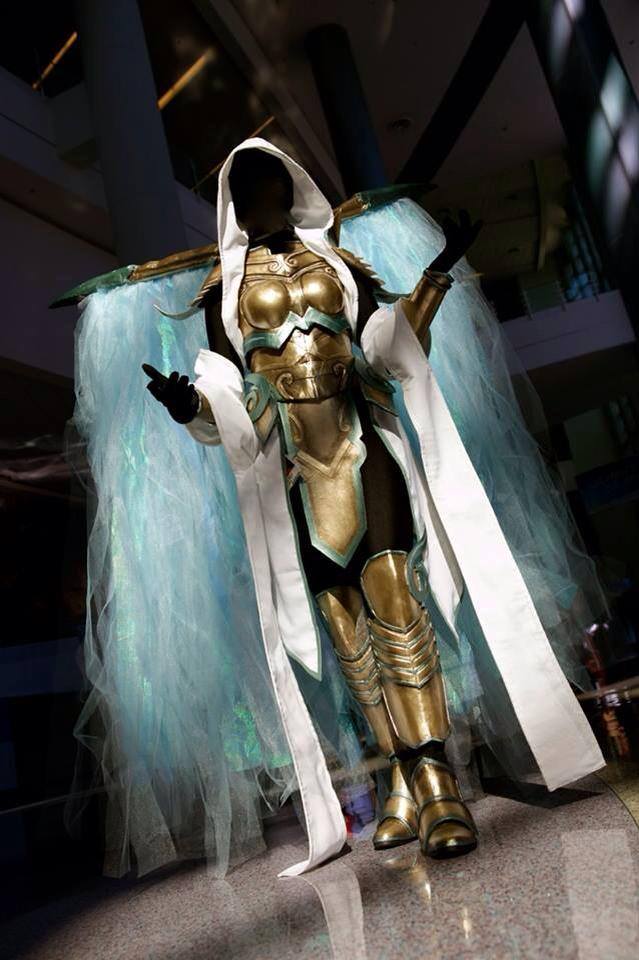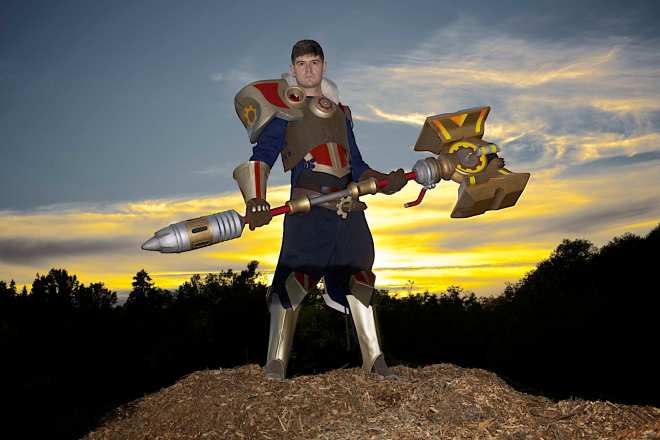I’m going to be doing a lot of tutorials rather than one really long tutorial to take you through the steps I went through to make my infested Kerrigan costume. I decided to do several posts because there are so many different parts to the costume, and also because it would make for such a long tutorial, since I like to post so many pictures with my tutorials.
Edit: These tutorials can be used more than for Kerrigan. They can be used for fiberglass molds, life casting, foam latex gloves, cowls, and body suits. You can sculpt and make any type of suit or gloves that you want. I couldn’t find any definitive foam latex body suit threads on the internet, and so I’m showing you what I did, because all in all, it’s one piece, didn’t (and hasn’t) fallen apart, and moves beautifully. We did all of this for the first time, everything we did was new to us, and we’ve learned so much, so we wanted to pass that on.

This is an introduction, where I tell you what you need to know before starting on a costume of this caliber.
Now, we made Kerrigan the way we did because one, we wanted to do her justice, and two, we wanted to make it as realistic as possible. This was definitely a joint effort between Mario and I, because he just handles the power tools better, and with a lot of the mold making, it would have been impossible for one person to do.

I’ve said this several times, but it bears repeating: We aren’t happy with the cowl/face. We had to use the face prosthetic to cover up elastic that was holding on the cowl, and it didn’t fit correctly because we didn’t allow for the extra room that the dreads would take up under the cowl. I will talk about ways to prevent this when I get to that part of the tutorial.
If you’re planning on following this tutorial to make this costume how we did, please, listen to me now:
Do not plan on doing this costume for cheaper than $4000. This is all material costs. Foam latex, building materials, renting a huge mixer, gallons and gallons of resin, yards of fiberglass, contacts, clay, fiberglass rods. If you are interested in what exactly everything was costing, email us and I can send you an itemized list, but know that we bought the minimum of everything that we needed, and only had maybe the tiniest bits left over, and had to go back and get more of a lot of the materials because we underestimated how much we needed. This also includes reference materials, DVDs that cost hundreds, expensive books, etc. Ours was over 4k, but I believe 4k is the absolute lowest you can go with cutting things out unless you have a friend with a special effects studio you can borrow.
Do your research. There are some forums, reading materials and DVDs that I recommend you check out before you start on this project. You need to fully understand what you are doing and why you are doing it before you even pick up your first tool.

Have a friend(s) or significant other to help you. This is absolutely not a project you can do alone. Our method calls for lifecasting, which is impossible to do by yourself, and fiberglassing a mold of a large size is also impossible. It took us two days working 17 hours each to get the full body mold finished. If you have more people working with you, you will get things done much quicker.
Budget your money. I had to order a ton of things online because we didn’t have a store nearby that carried what we need, but if you live in Los Angeles or another city that has a lot of special effects stores, you might be able to save a lot of money just in shipping by getting your materials local.

Make sure you have all of your materials before beginning each step. I know there were a few times we almost ran out of fiberglass sheet or resin and had to run to TAP Plastics before they closed for the day. Make sure you have plenty of all of your materials ready and on hand before you even begin.

Have the proper amount of space for this project. You’ll need a large garage or covered outside area to do the majority of your work. Working with fiberglass needs lots of open air and the proper safety measures, and working with stone molds is just plain messy. We didn’t do anything but the sculpting inside. You will also need a garage for the large oven to bake the foam latex in, unless you know someone who has a very large oven that you can borrow (not one that’s used for food, the fumes that foam latex puts off during the curing process makes ovens unusable for food).
Budget your time. This is not a costume you can just decide to do a month before the convention, unless you are a professional special effects artist and have a team of people working for you to get it done. Even then, you’re probably pushing it. It took us 700 to get this costume ready to wear.
We are not professionals. I got a lot of advice from a friend, which I will transfer here, but we have never, ever done anything like this before, we may have done things ‘wrong’ a few times, but we learned as we went, and a lot of what I go by is from the first book on our list below, so please pick that up.
Recommended learning materials:
These are materials I will be referencing throughout the tutorials; in some spots I was going step by step from one of the books, so if nothing else, pick up the first book I list because I’m not putting word for work pages and pages from the book.
1. Special Makeup Effects for Stage and Screen: Todd Debreceni. This is the book where I learned most of the techniques I used for Kerrigan. Read it front to back, make sure you understand each step and why you do each step, or you won’t understand what you’re doing while you’re doing it. Make sure you pick up this book, if nothing else. I also suggest putting tabs in the pages for quick reference for each step.
2. Neill Gorton’s Creating Character Prosthetics in Silicone. No, we aren’t working with silicone, but these DVDs helped me to understand how to make molds and work with fiberglass. If you can’t afford the whole set, at least get parts 1-3.
3. Mark Alfrey- Prosthetic Makeup for Beginners DVD. We decided to use foam latex for all the pieces of Kerrigan, as well as make a cowl for the head/dreads. This video is definitely a must have if you’re doing the dreads/head the same way we are. This DVD helped us to understand more on how we need to make the foam latex cowl, and how to handle the foam latex.
4. The Monster Maker’s Mask Maker’s Handbook. This book is for a latex mask, but helps to understand with the sculpting and molding aspects. Not a must have, but a good reference material.
5. The FX Lab forums. Definitely fun to look around, read, and even ask questions if you have any, but I definitely suggest using the search engine for any questions first. Lots of good tips and helpful people.
I think that’s it for the intro. I’ll be putting up a post or two each week, depending on how long it takes me to write these out.
EDIT: I forgot to add in one important thing. Have lots and lots of patience. This costume was one of the most stressful things I have ever done, there were times when I just wished that we hadn’t even attempted it, but we’ve learned so much over the course of making it that I’m glad we went through with it. There were nights when we just had to step away from it for a few days, not look at it so that we could get a clear mind. Don’t rush, and take your time with each step.


















